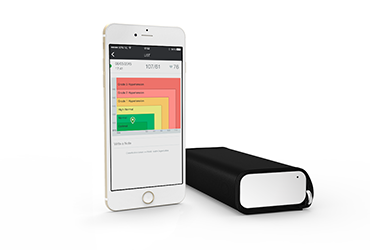In November 2017, the American Heart Association (AHA) and the American College of Cardiology, the two leading global authorities on everything heart health related, issued new guidelines for high blood pressure and reviewed current classifications and targets for blood pressure levels. Under the new guidelines, the warning zone for adults has been lowered to 120-129 systolic BP and classified “elevated blood pressure”. Anyone with 130-139 systolic or 80-89 diastolic levels is now considered to have a high blood pressure also called Stage 1 Hypertension.
What do the new AHA guidelines mean in general?
What this revision means is that now more people around the world are considered hypertensive and will require medication and monitoring of their blood pressure levels to control them. For example, in the USA alone, the number of adult hypertensive men under the age 45 will triple, while the number of such women will double. With this reclassification, the total number of Americans suffering from high blood pressure will rise by a staggering 31 million, making almost every other adult in America hypertensive.
What do the new AHA guidelines mean for me?
With revised blood pressure values, now more adults are considered hypertensive, which means a higher risk of developing serious heart problems such as a heart attack or stroke. It means that you should start watching your blood pressure numbers earlier in your life and consider making lifestyle changes sooner. Before the revision, it was usually recommended to start measuring blood pressure frequently around your 50th birthday, but with the new guidelines you might want to start much earlier than that. Complications caused by high blood pressure are preventable, so you should focus on a healthier diet, more active lifestyle and seek a doctor’s advice if your blood pressure numbers start to rise above the 120/80 threshold. The American Heart Association also now recommends you monitor your blood pressure home as opposed to only at your doctor’s office. You can do this easily with a device such as QardioArm smart blood pressure monitor.
What do the new AHA guidelines mean for doctors and the healthcare system?
With more people now classified as hypertensive, doctors will need to screen more patients during their routine visits. With the lower thresholds for diagnosing hypertension, more patients will need to be treated with medication, receive more frequent doctor’s check-ups and work to lower their blood pressure. As a result, doctors will need to spend more time on patients who were previously considered low risk but are now classified as hypertensive.
QardioArm for patients and the QardioMD platform for doctors lets you skip the lines in your doctor’s waiting room, save time and money on in-person appointments and take control of your heart health from the comfort of your home instead. QardioArm allows you to easily share your blood pressure data with your doctor who, using our remote monitoring platform QardioMD, can effectively look after your heart 24/7. Ask your doctor if he is using Qardio and get better care with Qardio smart monitoring devices.
Source:
American Heart Association




